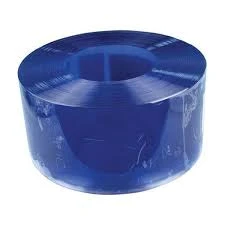- Afrikaans
- Albanian
- Amharic
- Arabic
- Armenian
- Azerbaijani
- Basque
- Belarusian
- Bengali
- Bosnian
- Bulgarian
- Catalan
- Cebuano
- Corsican
- Croatian
- Czech
- Danish
- Dutch
- English
- Esperanto
- Estonian
- Finnish
- French
- Frisian
- Galician
- Georgian
- German
- Greek
- Gujarati
- Haitian Creole
- hausa
- hawaiian
- Hebrew
- Hindi
- Miao
- Hungarian
- Icelandic
- igbo
- Indonesian
- irish
- Italian
- Japanese
- Javanese
- Kannada
- kazakh
- Khmer
- Rwandese
- Korean
- Kurdish
- Kyrgyz
- Lao
- Latin
- Latvian
- Lithuanian
- Luxembourgish
- Macedonian
- Malgashi
- Malay
- Malayalam
- Maltese
- Maori
- Marathi
- Mongolian
- Myanmar
- Nepali
- Norwegian
- Norwegian
- Occitan
- Pashto
- Persian
- Polish
- Portuguese
- Punjabi
- Romanian
- Russian
- Samoan
- Scottish Gaelic
- Serbian
- Sesotho
- Shona
- Sindhi
- Sinhala
- Slovak
- Slovenian
- Somali
- Spanish
- Sundanese
- Swahili
- Swedish
- Tagalog
- Tajik
- Tamil
- Tatar
- Telugu
- Thai
- Turkish
- Turkmen
- Ukrainian
- Urdu
- Uighur
- Uzbek
- Vietnamese
- Welsh
- Bantu
- Yiddish
- Yoruba
- Zulu
Understanding the Benefits and Uses of Flexible PVC in Various Applications
Understanding Flexible PVC Versatility and Applications
Flexible Polyvinyl Chloride (PVC) is a type of plastic that has gained immense popularity across various industries due to its adaptability, durability, and cost-effectiveness. This versatile material is a variation of the more rigid PVC, engineered to remain pliable and easily moldable, making it suitable for a plethora of applications.
Composition and Properties of Flexible PVC
Flexible PVC is produced by adding plasticizers to the base polyvinyl chloride resin. Plasticizers are substances that increase the plasticity or fluidity of the material, allowing it to bend, stretch, and be molded into diverse shapes without compromising its strength. The resulting product retains key features of traditional PVC, such as resistance to corrosion, abrasion, and moisture, while gaining improved elasticity and flexibility.
Moreover, flexible PVC is recognized for its lightweight nature, which enhances its usability in various applications. It also has good electrical insulation properties, making it a preferred choice in the electronics and electrical industries. Additionally, flexible PVC is available in an array of colors, textures, and finishes, enhancing its aesthetic appeal for consumer products.
Common Applications of Flexible PVC
The versatility of flexible PVC allows it to be used in a wide range of sectors, including construction, healthcare, automotive, and consumer goods.
1. Construction In the construction industry, flexible PVC is predominantly used in plumbing, roofing, and siding. Its resistance to moisture and chemicals makes it an ideal material for pipes and fittings. Flexible PVC sheets are also used as barriers against moisture in buildings, contributing to the longevity and structural integrity of constructions.
flexible pvc

2. Healthcare The medical field benefits greatly from flexible PVC, which is used to manufacture a variety of products such as IV bags, tubing, and surgical gloves. Its biocompatibility, coupled with the ability to be sterilized, makes it suitable for medical applications where hygiene and safety are paramount.
3. Automotive In the automotive industry, flexible PVC is utilized for interior trim, upholstery, and various sealing applications. Its resilience to heat, UV light, and chemicals makes it a reliable choice for materials that need to withstand the rigors of an automotive environment.
4. Consumer Goods Numerous everyday items are made from flexible PVC, such as inflatable toys, clothing, footwear, and packaging materials. Its ability to be printed on allows for creative designs and branding opportunities in consumer products.
Environmental Considerations
While flexible PVC offers numerous benefits, it is essential to understand the environmental implications of its production and disposal. The manufacturing process of PVC involves the use of chlorine, which raises concerns about the release of harmful dioxins into the environment. However, advancements in recycling technologies and the development of more sustainable plasticizers are helping to mitigate these issues.
The recycling of flexible PVC can reduce its environmental impact significantly. It can be repurposed into new products, minimizing waste and lowering the demand for new raw materials. Various industries are actively working on improving the recycling infrastructure for PVC, further promoting its sustainability.
Conclusion
Flexible PVC is a remarkable material that balances performance, versatility, and cost. Its applications span multiple industries, making it an integral part of modern manufacturing and product development. As the focus on sustainability continues to grow, the industry is evolving to address environmental concerns while still harnessing the advantageous properties of flexible PVC. Understanding its benefits, challenges, and future potential can help consumers and businesses make informed choices regarding its use. With the right approach, flexible PVC can play a crucial role in shaping a sustainable future while continuing to meet the demands of various industries.
-
Industrial Strip Curtains - Durable PVC & Plastic Solutions for Industrial DoorsNewsJun.24,2025
-
PVC Curtain Strip – Durable Standard PVC Strips for DoorsNewsJun.10,2025
-
PVC Strip Curtain – Durable & Transparent Plastic Strips for Industrial Use Affordable PricesNewsJun.10,2025
-
Clear Plastic Door Curtains Durable & Insulating VisibilityNewsJun.09,2025
-
Commercial Strip Curtains Energy Savings & Durability for Industrial UseNewsJun.09,2025
-
Anti-Cold PVC Strip Curtains Thermal Insulation & Energy Saving SolutionsNewsJun.09,2025



